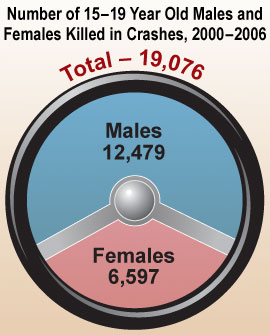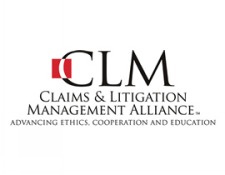Teenage Car Accident Lawyers – Connecticut
Connecticut Teen Car Accidents – Part of a National Problem
According to the federal government: “Motor vehicle crashes are the leading cause of death for U.S. teens, accounting for more than one in three deaths in this age group. In 2009, eight teens ages 16 to 19 died every day from motor vehicle injuries. Per mile driven, teen drivers ages 16 to 19 are four times more likely than older drivers to crash.” Centers for Disease Control and Prevention. Web-based Injury Statistics Query and Reporting System (WISQARS) [Online]. (2010). National Center for Injury Prevention and Control, Centers for Disease Control and Prevention (producer).
In 2008, there were a total of 36 Connecticut deaths as a result of teen motor vehicle accidents.Nationally, motor vehicle crashes are the leading cause of death among 15- to 20-year-olds. Nationally, 16-year-olds have higher crash rates than drivers of any other age.
According to the CDC, in 2009, about 3,000 teens in the United States aged 15–19 were killed and more than 350,000 were treated in emergency departments for injuries suffered in motor-vehicle crashes. Young people ages 15-24 represent only 14% of the U.S. population. However, they account for 30% ($19 billion) of the total costs of motor vehicle injuries among males and 28% ($7 billion) of the total costs of motor vehicle injuries among females.

Risk Factors for Connecticut Teenage Auto Accidents
The risk of motor vehicle crashes is higher among 16- to 19-year-olds than among any other age group. In fact, per mile driven, teen drivers ages 16 to 19 are four times more likely than older drivers to crash. Among teen drivers, those at especially high risk for motor vehicle crashes are:
- Males: In 2006, the motor vehicle death rate for male drivers and passengers ages 15 to 19 was almost two times that of their female counterparts.
- Teens driving with teen passengers: The presence of teen passengers increases the crash risk of unsupervised teen drivers. This risk increases with the number of teen passengers.
- Newly licensed teens: Crash risk is particularly high during the first year that teenagers are eligible to drive.
What factors put teen drivers at risk?
1. Teens are more likely than older drivers to underestimate dangerous situations or not be able to recognize hazardous situations. Jonah BA, Dawson NE. Youth and risk: age differences in risky driving, risk perception, and risk utility. Alcohol, Drugs and Driving 1987;3:13–29. 2. Teens are more likely than older drivers to speed and allow shorter headways (the distance from the front of one vehicle to the front of the next). The presence of male teenage passengers increases the likelihood of this risky driving behavior. Simons-Morton B, Lerner N, Singer J. The observed effects of teenage passengers on the risky driving behavior of teenage drivers. Accident Analysis and Prevention 3. Among male drivers between 15 and 20 years of age who were involved in fatal crashes in 2005, 37% were speeding at the time of the crash and 26% had been drinking. National Highway Traffic Safety Administration (NHTSA), Dept. of Transportation (US). Traffic safety facts 2008: Speeding . Washington (DC): NHTSA; 2000a [cited 2009 Nov 6]; National Highway Traffic Safety Administration (NHTSA), Dept. of Transportation (US). Traffic safety facts 2008: Young Drivers . Washington (DC): NHTSA; 2008b [cited 2009 Nov 6 ] 4. Compared with other age groups, teens have the lowest rate of seat belt use. In 2005, 10% of high school students reported they rarely or never wear seat belts when riding with someone else.10 5. Male high school students (12.5%) were more likely than female students (7.8%) to rarely or never wear seat belts. Centers for Disease Control and Prevention. Youth Risk Behavior Surveillance—United States, 2007 [Online]. (2009). National Center for Chronic Disease Prevention and Health Promotion (producer). [Cited 2009 Nov 6 ]. 6. Compared with other age groups, teens have the lowest rate of seat belt use. 7. African-American students (12%) and Hispanic students (13%) were more likely than white students (10.1%) to rarely or never wear seat belts. Id. 8. At all levels of blood alcohol concentration (BAC), the risk of involvement in a motor vehicle crash is greater for teens than for older drivers. Id. 9. In 2008, 25% of drivers ages 15 to 20 who died in motor vehicle crashes had a BAC of 0.08 g/dl or higher. Id. 10. In a national survey conducted in 2007, nearly three out of ten teens reported that, within the previous month, they had ridden with a driver who had been drinking alcohol. One in ten reported having driven after drinking alcohol within the same one-month period. Id. 11. In 2008, nearly three out of every four teen drivers killed in motor vehicle crashes after drinking and driving were not wearing a seat belt. Id. 12. In 2008, half of teen deaths from motor vehicle crashes occurred between 3 p.m. and midnight and 56% occurred on Friday, Saturday, or Sunday. Id.
Connecticut Teen Motor Vehicle Accidents – The Legislative Response in 2007
After a rash of fatal teen auto accidents in Connecticut during the early 2000s, in 2007 Connecticut created a Teen Safe Driving Task Force to examine laws and raise awareness of this critical issue facing teenagers, parents and communities.
The Governor later signed into law the legislation that the task force recommended. It included rolling back curfew times for teen drivers, increasing on-the-road training requirements and implementing tougher penalties for driving under the influence and other motor vehicle violations related to teen driving. According to the Connecticut Department of Motor Vehicles, teen drivers 16 and 17 years-old in Connecticut had the fewest number of fatal crashes last year in more than a decade. Connecticut in 2009 saw a 62-percent reduction in fatal crashes involving this age group of drivers when examining a 12-year average since 1997. In the 2009 calendar year the number dropped to 6 for all of that year.
Connecticut had a 54 percent reduction in these fatal crashes from 2005 to 2009. In addition, the state saw a 16.5 percent reduction for all accidents in which a 16 or 17-year-old Connecticut driver was at fault for 2008 when the new laws were first adopted and currently the most recent set of complete numbers. (5,640 accidents in 2007 and 4,704 in 2008)
What can Connecticut parents of teen drivers do to help avoid teen car accidents?
2009 studies published in the journal Pediatrics involved more than 5,500 teenagers. The first study showed that teens who said their parents set clear rules, paid attention to where they were going and whom they were with, and did so in a supportive way were: half as likely to crash, twice as likely to wear seat belts, 71 percent less likely to drive while intoxicated and 30 percent less likely to use a cell phone while driving. These findings are compared to teens who said their parents were less involved.
The second study found that teens who reported being the main driver of a vehicle were twice as likely to be involved in a crash, compared with teens who said they shared a vehicle with other family members. Nearly 75 percent of the teens surveyed reported being the main driver of a car.
As a whole, these studies confirm fewer crashes among teens with supportive parents and clear rules.
A parent may avoid unrealistic expectation of their child’s level of understanding of the dangers posed in the operation of a motor vehicle. Emphasizing what is not acceptable behavior with a teenager, enforcing consequences for violations of rules and vigilantly monitoring actions and location may result in less reckless and negligent behavior on their part.
Responding to Connecticut Teen Accidents
The firm understands that the injuries suffered in a car accident can be financially and physically devastating. Jackson O’Keefe has the experience, knowledge and resources to help you recover full and fair compensation for all your losses. If you have suffered a personal injury because of the negligence or carelessness of another person, Jackson O’Keefe can take care of your legal concerns while you heal physically and emotionally. Contact the firm to schedule a confidential consultation to discuss your personal injury claim. Jackson O’Keefe handles catastrophic injury claims involving traumatic brain injury (TBI), spinal cord injury and paralysis, as well as claims for wrongful death.
Jackson O’Keefe handles Connecticut motor vehicle accident cases and Connecticut teenager car accident cases throughout the State of Connecticut, including clients in West Hartford, Farmington, Avon, Simsbury, Old Lyme, Ellington, Tolland, North Haven, Wallingford, Wethersfield, Rocky Hill, Cromwell, Bethlehem, Moodus, East Haddam, Hadlyme, Madison, Middletown, Hartford, Southington, Plantsville, Griswold, Hartford County, New Haven County, Middlesex County, New London County and Litchfield County.






